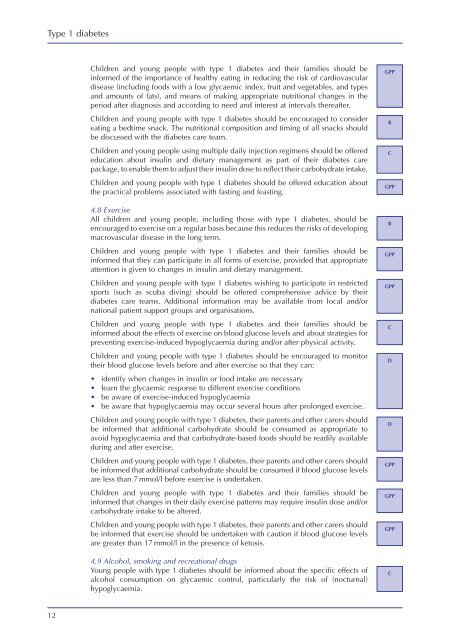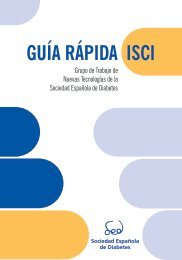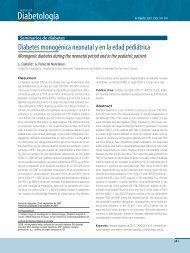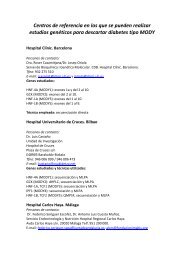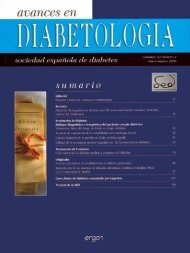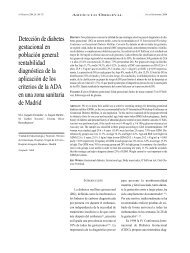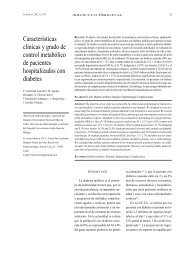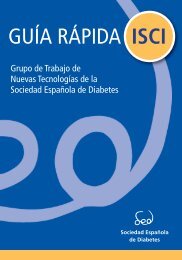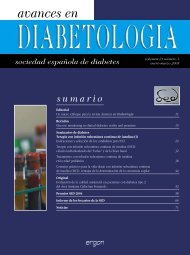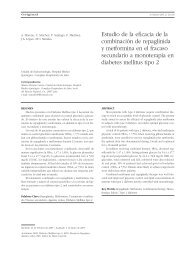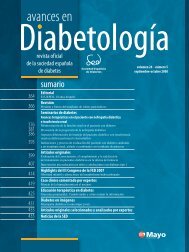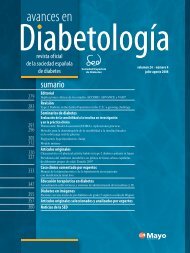Create successful ePaper yourself
Turn your PDF publications into a flip-book with our unique Google optimized e-Paper software.
<strong>Type</strong> 1 <strong>diabetes</strong>Children and young people with type 1 <strong>diabetes</strong> and their families should beinformed of the importance of healthy eating in reducing the risk of cardiovasculardisease (including foods with a low glycaemic index, fruit and vegetables, and typesand amounts of fats), and means of making appropriate nutritional changes in theperiod after diagnosis and according to need and interest at intervals thereafter.Children and young people with type 1 <strong>diabetes</strong> should be encouraged to considereating a bedtime snack. The nutritional composition and timing of all snacks shouldbe discussed with the <strong>diabetes</strong> care team.Children and young people using multiple daily injection regimens should be offerededucation about insulin and dietary management as part of their <strong>diabetes</strong> carepackage, to enable them to adjust their insulin dose to reflect their carbohydrate intake.Children and young people with type 1 <strong>diabetes</strong> should be offered education aboutthe practical problems associated with fasting and feasting.4.8 ExerciseAll children and young people, including those with type 1 <strong>diabetes</strong>, should beencouraged to exercise on a regular basis because this reduces the risks of developingmacrovascular disease in the long term.Children and young people with type 1 <strong>diabetes</strong> and their families should beinformed that they can participate in all forms of exercise, provided that appropriateattention is given to changes in insulin and dietary management.Children and young people with type 1 <strong>diabetes</strong> wishing to participate in restrictedsports (such as scuba diving) should be offered comprehensive advice by their<strong>diabetes</strong> care teams. Additional information may be available from local and/ornational patient support groups and organisations.Children and young people with type 1 <strong>diabetes</strong> and their families should beinformed about the effects of exercise on blood glucose levels and about strategies forpreventing exercise-induced hypoglycaemia during and/or after physical activity.Children and young people with type 1 <strong>diabetes</strong> should be encouraged to monitortheir blood glucose levels before and after exercise so that they can:• identify when changes in insulin or food intake are necessary• learn the glycaemic response to different exercise conditions• be aware of exercise-induced hypoglycaemia• be aware that hypoglycaemia may occur several hours after prolonged exercise.Children and young people with type 1 <strong>diabetes</strong>, their parents and other carers shouldbe informed that additional carbohydrate should be consumed as appropriate toavoid hypoglycaemia and that carbohydrate-based foods should be readily availableduring and after exercise.Children and young people with type 1 <strong>diabetes</strong>, their parents and other carers shouldbe informed that additional carbohydrate should be consumed if blood glucose levelsare less than 7 mmol/l before exercise is undertaken.Children and young people with type 1 <strong>diabetes</strong> and their families should beinformed that changes in their daily exercise patterns may require insulin dose and/orcarbohydrate intake to be altered.Children and young people with type 1 <strong>diabetes</strong>, their parents and other carers shouldbe informed that exercise should be undertaken with caution if blood glucose levelsare greater than 17 mmol/l in the presence of ketosis.4.9 Alcohol, smoking and recreational drugsYoung people with type 1 <strong>diabetes</strong> should be informed about the specific effects ofalcohol consumption on glycaemic control, particularly the risk of (nocturnal)hypoglycaemia.GPPBCGPPBGPPGPPCDDGPPGPPGPPC12


